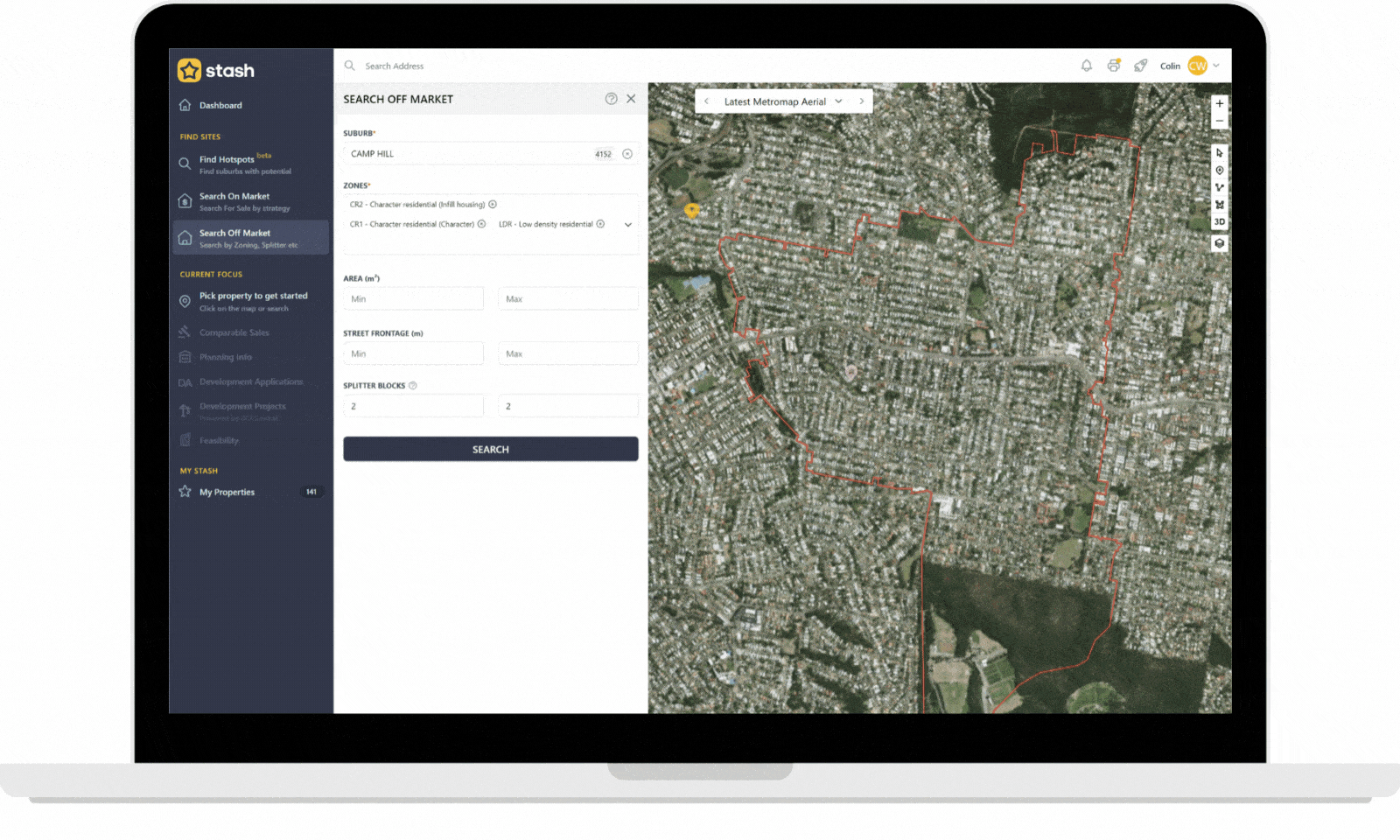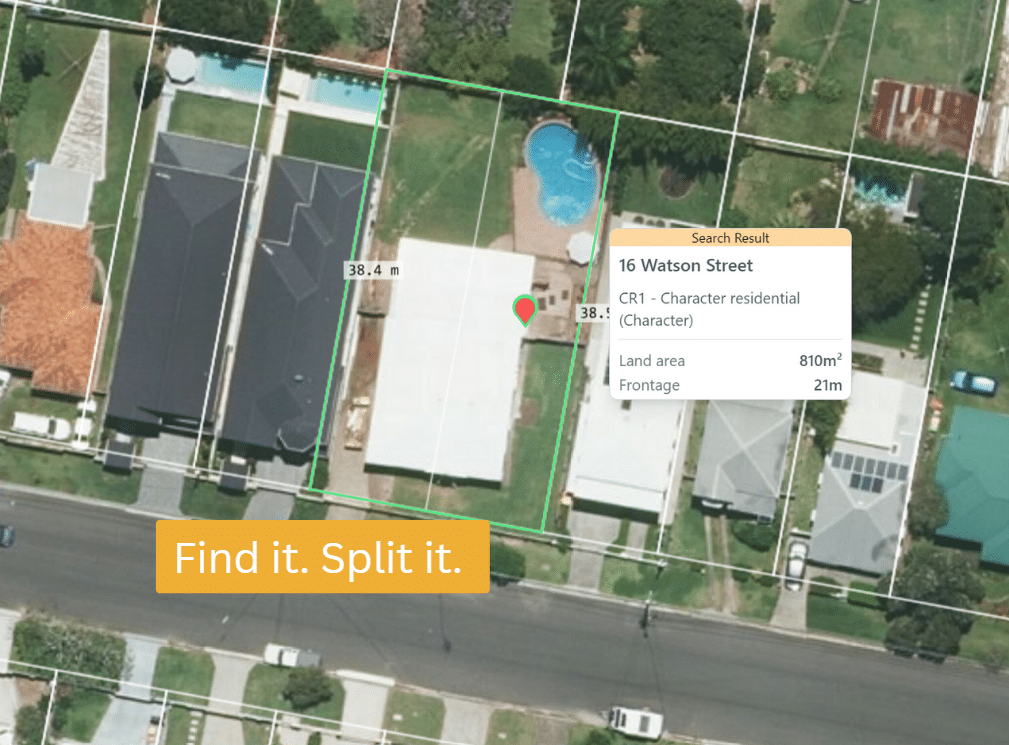Splitter vs Subdivision?
Is a splitter better than a subdivision?
If you’re considering investing in property, you may have heard of two popular property investment strategies: splitter blocks and sub-division. While both strategies involve splitting a larger block of land into smaller ones, there are some key differences between them. In this blog, we’ll explore the pros and cons of each strategy, so you can decide which one is right for you.
Things to consider when looking at splitter blocks
- Development approval is not required for a splitter, but it is for a subdivision.
- Minimum lot sizes do not apply to a splitter, but they do to a subdivision.
- The existing dwelling on the property may be protected from demolition or not be in a suitable position.
- The size and shape of the existing lots cannot be changed.
- Lack of infrastructure services can be a hurdle for development plans.
- Finally, infrastructure charges should not apply to a splitter, but they do to a subdivision.
It’s crucial to understand these differences when considering whether to invest in “splitter” blocks or sub-divisions, as they can have significant implications on the development process and costs. It’s always advisable to seek professional advice and thoroughly research the specific circumstances of each investment opportunity before making any decisions.
What’s the difference?
A splitter block refers to a property that is already two lots on one title, while a subdivision involves dividing land into multiple lots.

Splitter Blocks
Splitter blocks refer to the process of dividing a single property title with multiple existing lots into individual property titles, with the aim of selling each property lot separately. The advantage of this strategy is that it can increase the value of the land, as smaller blocks can be more desirable and easier to sell than larger ones. Splitter blocks are often desirable where there is a high demand for land, such as inner-city suburbs or coastal regions and most importantly, a splitter does not need to go through the process of a development application as the property is already subdivided.
Pros:
- Increased value: By dividing a larger block of land into smaller ones, you can increase the value of the land overall.
- Flexibility: You can choose to sell each block separately or develop them yourself.
- Potentially lower development costs: Compared to sub-division, splitter blocks may have lower development costs, as they often require fewer approvals and infrastructure upgrades.
Cons:
- Lower profit margins: While splitter blocks can increase the value of the land, the profit margins may be lower compared to sub-division, as you are only selling smaller blocks.
- Potential zoning and regulatory issues: Some areas may have zoning or regulatory restrictions that prevent you from subdividing the land.
Sub-Division
Sub-division refers to the process of dividing a larger block of land on one lot and one property title into individual smaller lots, with the aim of developing each lot separately. The advantage of this strategy is that it can potentially yield higher profit margins, as you are able to develop each lot and sell them individually. A subdivision requires a Development Application for Reconfiguring a Lot, which can take time and involves anywhere up to around $10-12,000 worth of expense (not to mention additional holding costs).
Pros:
- Higher profit margins: Sub-division can potentially yield higher profit margins compared to splitter blocks, as you are developing and selling each lot separately.
- Increased housing supply: Sub-division can help to increase the supply of housing in an area, which can be beneficial for both investors and the wider community.
- Potential for rental income: If you choose to hold onto the properties, you can potentially earn rental income from each lot.
Cons:
- Higher development costs: Sub-division can have higher development costs compared to splitter blocks, as it often requires more infrastructure upgrades and approvals.
- More complex process: Sub-division can be a more complex process compared to splitter blocks, as there are often more regulatory requirements and approvals needed.
Ultimately, the decision to pursue a splitter block or sub-division strategy will depend on your individual circumstances and goals. It’s important to do your research and seek professional advice before making any investment decisions. With the right approach, either strategy can be a lucrative investment opportunity.

Find Splitter blocks or development sites in seconds with Stash.
A development approval is not required for a splitter, but it is for a subdivision….
Splitter vs Subdivision?
Splitter
Splitter blocks refer to the process of dividing a single property title with multiple existing lots into individual property titles, with the aim of selling each property lot separately. The advantage of this strategy is that it can increase the value of the land, as smaller blocks can be more desirable and easier to sell than larger ones. Splitter blocks are often desirable where there is a high demand for land, such as inner-city suburbs or coastal regions and most importantly, a splitter does not need to go through the process of a development application as the property is already subdivided.
Subdivision
Sub-division refers to the process of dividing a larger block of land on one lot and one property title into individual smaller lots, with the aim of developing each lot separately. The advantage of this strategy is that it can potentially yield higher profit margins, as you are able to develop each lot and sell them individually. A subdivision requires a Development Application for Reconfiguring a Lot, which can take time and involves anywhere up to around $10-12,000 worth of expense (not to mention additional holding costs).
Splitter blocks are are a great strategy to finding properties with investment potential. Stash has identified every splitter block in the country to make it easy to find your next property investment.
Find your needle in the haystack today. Sign up for our free trial and start finding great deals fast!
Happy Stashing!



